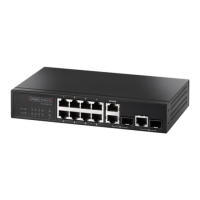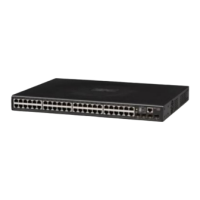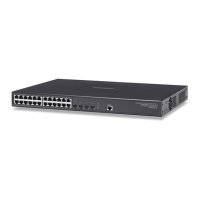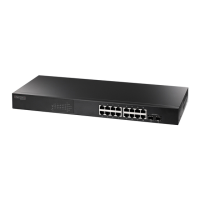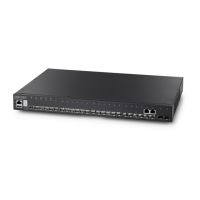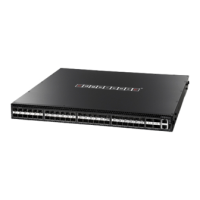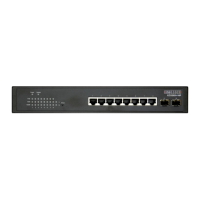C
HAPTER
15
| Basic Administration Protocols
Link Layer Discovery Protocol
– 371 –
◆ SNMP Notification – Enables the transmission of SNMP trap
notifications about LLDP and LLDP-MED changes. (Default: Disabled)
This option sends out SNMP trap notifications to designated target
stations at the interval specified by the Notification Interval in the
preceding section. Trap notifications include information about state
changes in the LLDP MIB (IEEE 802.1AB), the LLDP-MED MIB (ANSI/
TIA-1057), or vendor-specific LLDP-EXT-DOT1 and LLDP-EXT-DOT3
MIBs.
For information on defining SNMP trap destinations, see "Specifying
Trap Managers" on page 401.
Information about additional changes in LLDP neighbors that occur
between SNMP notifications is not transmitted. Only state changes that
exist at the time of a trap notification are included in the transmission.
An SNMP agent should therefore periodically check the value of
lldpStatsRemTableLastChangeTime to detect any lldpRemTablesChange
notification-events missed due to throttling or transmission loss.
◆ Basic Optional TLVs – Configures basic information included in the
TLV field of advertised messages.
■
Management Address – The management address protocol
packet includes the IPv4 address of the switch. If no management
address is available, the address should be the MAC address for the
CPU or for the port sending this advertisement.
The management address TLV may also include information about
the specific interface associated with this address, and an object
identifier indicating the type of hardware component or protocol
entity associated with this address. The interface number and OID
are included to assist SNMP applications in the performance of
network discovery by indicating enterprise specific or other starting
points for the search, such as the Interface or Entity MIB.
Since there are typically a number of different addresses associated
with a Layer 3 device, an individual LLDP PDU may contain more
than one management address TLV.
Every management address TLV that reports an address that is
accessible on a port and protocol VLAN through the particular port
should be accompanied by a port and protocol VLAN TLV that
indicates the VLAN identifier (VID) associated with the management
address reported by this TLV.
■
Port Description – The port description is taken from the ifDescr
object in RFC 2863, which includes information about the
manufacturer, the product name, and the version of the interface
hardware/software.
■
System Capabilities – The system capabilities identifies the
primary function(s) of the system and whether or not these primary
functions are enabled. The information advertised by this TLV is
described in IEEE 802.1AB.
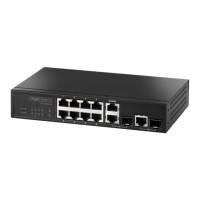
